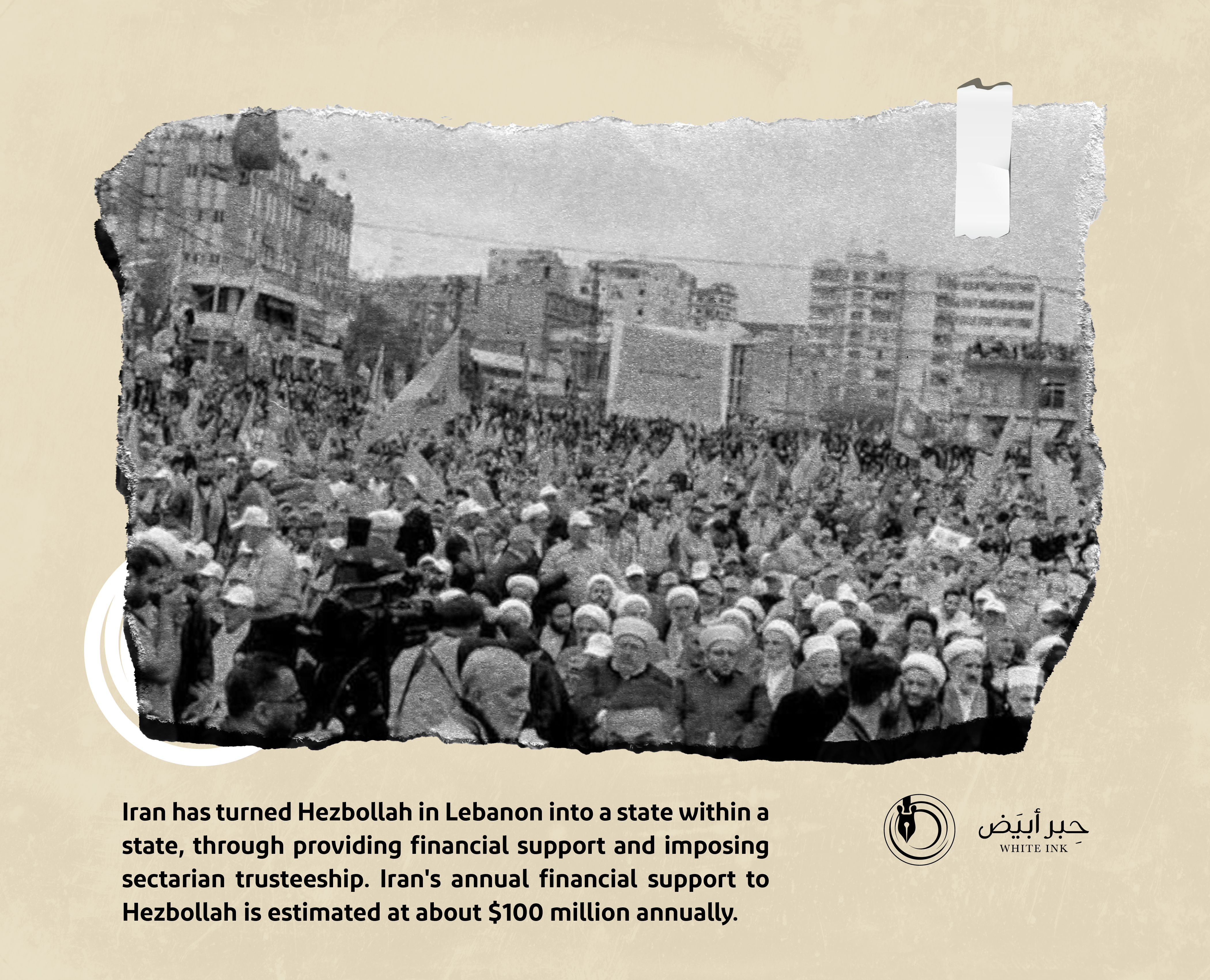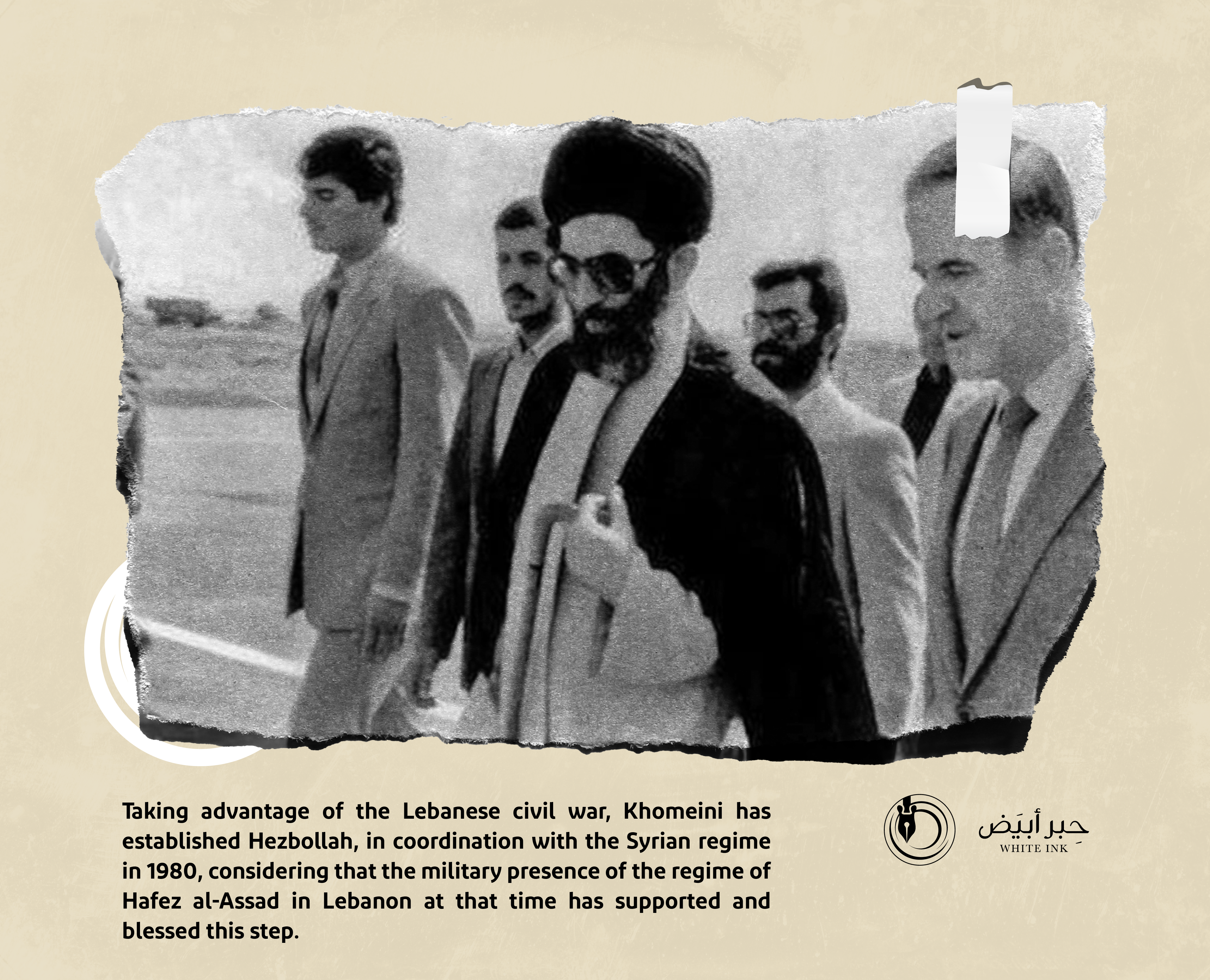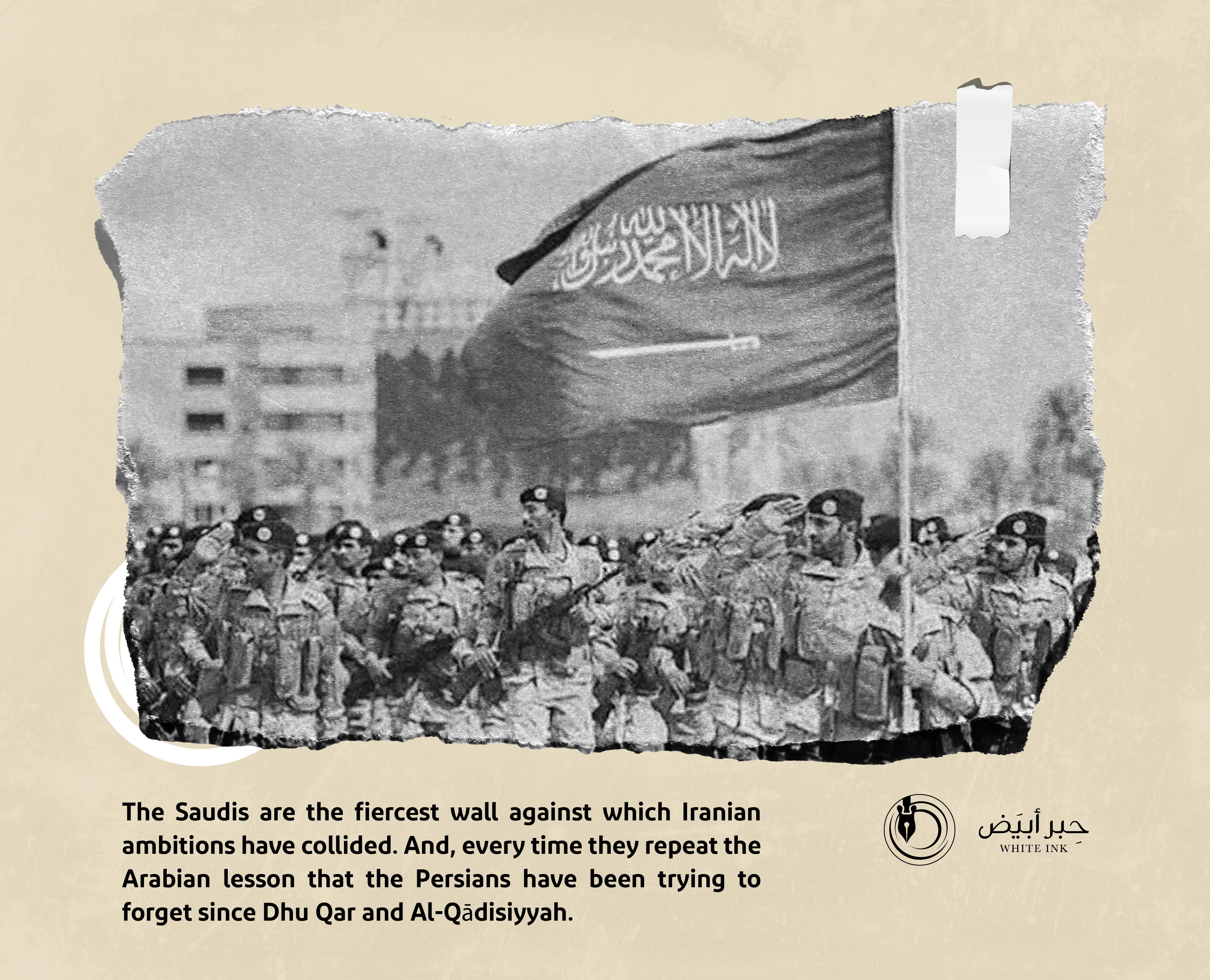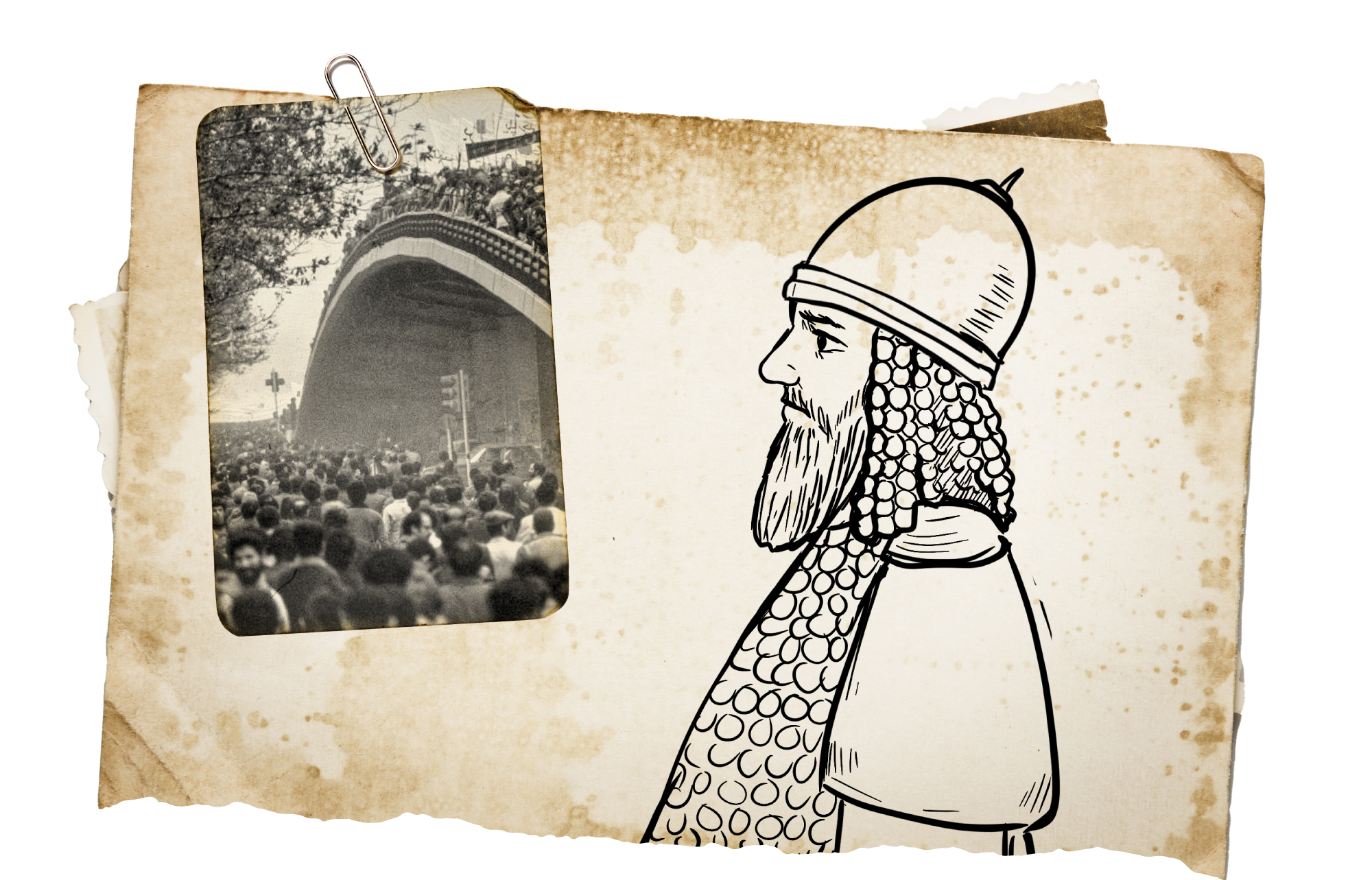
Using the Arabs against each other
The stability of the Persian strategy from ancient to contemporary history
Those interested in the history of the Middle East realize that Iranian policy throughout historical times has always insisted on expanding westward in the eastern Mediterranean and the Arabian Gulf. This expansionist policy is reinforced by a racist ideology which is the hegemony of the Aryan race over the region and the hatred of the Semitic race, whose majority is Arabs.
In a study entitled “Iran’s historical tendency to reach the eastern Mediterranean”, the Lebanese researcher Jamal Wakim reviews the firm foundations of this policy from ancient history to the contemporary period, explaining the beginnings of this policy, saying: “By the middle of the sixth century BC, Cyrus the Great had imposed his hegemony on the entire Iranian plateau, allowing Cambyses to impose his control over Mesopotamia, then Anatolia, the Levant, and Egypt”. Therefore, the Persian rulers resorted to the policy of direct occupation and sometimes to the policy of imposing nominal influence on the Arab regions, especially the interior regions of the Arabian Peninsula, where the Persian army had no real experience in desert wars.
During the reign of the Sassanid king, Ardashir Babak (226-241), the Persians resorted to a strategy of confronting the Arab tribes in order to secure their borders. The Persians adopted the establishment of the Protecting Emirate and its idea was that the best way to secure the Persian borders from the Arabs was the Arabs themselves. Accordingly, the Arab Emirate of Al-Hira was the protecting Emirate of the Persians from the attacks of the Arab tribes, and it was used to subjugate the tribes to the Persian influence. On the other hand, the Emirate of Al-Hira was a barricade for Persia in the face of the Romans. Al-Hira, which is located in southern Iraq, has achieved the strategy that the Persians sought, provided that it always remains under their influence and control.
As for the Iraqi Khaled Al-Douri, he believes that the Emirate of Al-Hira began to rebel against the reality and policy that the Persians planned for them, and that was during the time of Al-Nu’man Ibn Al-Mundhir. Al-Nu’man was alerted to the policy of uniting the Arab tribes and establishing a strong Arab alliance in order to confront the direct interference of the Persians in the affairs of the Kingdom of Al-Hira. Thus, Al-Nu’man became one of the important Arab figures against the Persians, who seek to unite the Arab tribes, and thus a clash between the Arabs and the Persians was inevitable. What confirms this is the Arab poets’ support for Al-Nu’man ibn Al-Mundhir. Al-Nabigha Al-Dhubyani said in praise of Al-Nu’man:

This confirms the constant Persian policy towards the Arabs to this day, which is the policy of “divide and rule”, that is, use the Arabs against each other and you will have sovereignty over them. Al-Douri narrates what Khosrau said when he offered the rule of Al-Hira to an Arab man. He said: “Can you confront the Arabs on my behalf?”.
The policy of divide and rule and using the Arabs against each other continued and became the basis of the Iranian policy, and it was the same approach adopted by Khomeinist Iran after the Islamic revolution (1979). With this Khomeinist revolution, Iran resorted to religious cover to hide the historical Persian tendency to control the Arabs. Khomeini announced the policy of exporting the Islamic revolution to the Arab world, stressing that there are no borders between believers in Islam. Jordanian researcher “Ali Mohafazah” proves this, saying: “The goal of the new Iranian regime in the era of the Islamic Revolution was to export its revolution and be recognized as a dominant power in the region”.
The Khomeinist revolution in Iran is a practical implementation of what the Persians have been practicing against the Arabs since ancient history.

Referring to the researcher Jamal Wakim in which he emphasized that this policy began very early in the wake of the success of the revolution in Iran in (1980): “Khomeini and the Syrian President Hafez Al-Assad laid the foundations for a solid relationship between the two countries. Syria was very important to Iran because it was Iran’s gateway to the eastern Mediterranean”. The alliance of Iran and Syria led to Iran’s entry into Lebanon. This intervention began with the presence of the Syrian forces on the lands of Lebanon after the civil war. Iran began to provide financial aid to the followers of the Shiite sect in Lebanon, and this aid was estimated at about a hundred million dollars annually. The matter reached its climax when Iran established what was known as Hezbollah, which was doctrinally linked to the leader of the Iranian revolution. The Secretary-General of the party became the legal representative of the Supreme Leader of the Islamic Republic of Iran in Tehran. Thus, Hezbollah became a state within the Lebanese state, so Iran repeated its old Persian policy since the establishment of Al-Hira, which is the policy of divide and rule and using the Arabs against each other.


- Jamal Wakim, Eurasia and the West: Hegemony over the Middle East (Beirut: Abaad publishing House, 2016).
- Hussein Mujib Al-Masri, Relationships between Arabs, Persians and Turks (Cairo: Al-Dar-Althakafia Publishing, 2001).
- Khaled Al-Douri, The Arab Resistance to the Sassanid Influence in Al-Hira from 226 AD to the Battle of Dhi Qar, Unpublished Master’s Thesis, College of Education, Tikrit University (2003).
- Abd Al-Wahhab Azzam, The Links between Arabs and Persians and Their literature in Pre-Islamic Times and Islam (Cairo: Hindawi Foundation, 2012).
- Ali Mohafazah, Iran between Persian Nationalism and the Islamic Revolution (Amman: Arab Institute for research and Publishing, 2013).
- Homa Katouzian, The Persians: Iran in the Ancient, Medieval and Modern Times, translated by: Ahmed Hassan Al-Ma’ini (Beirut: Dar Jadawel, 2014).
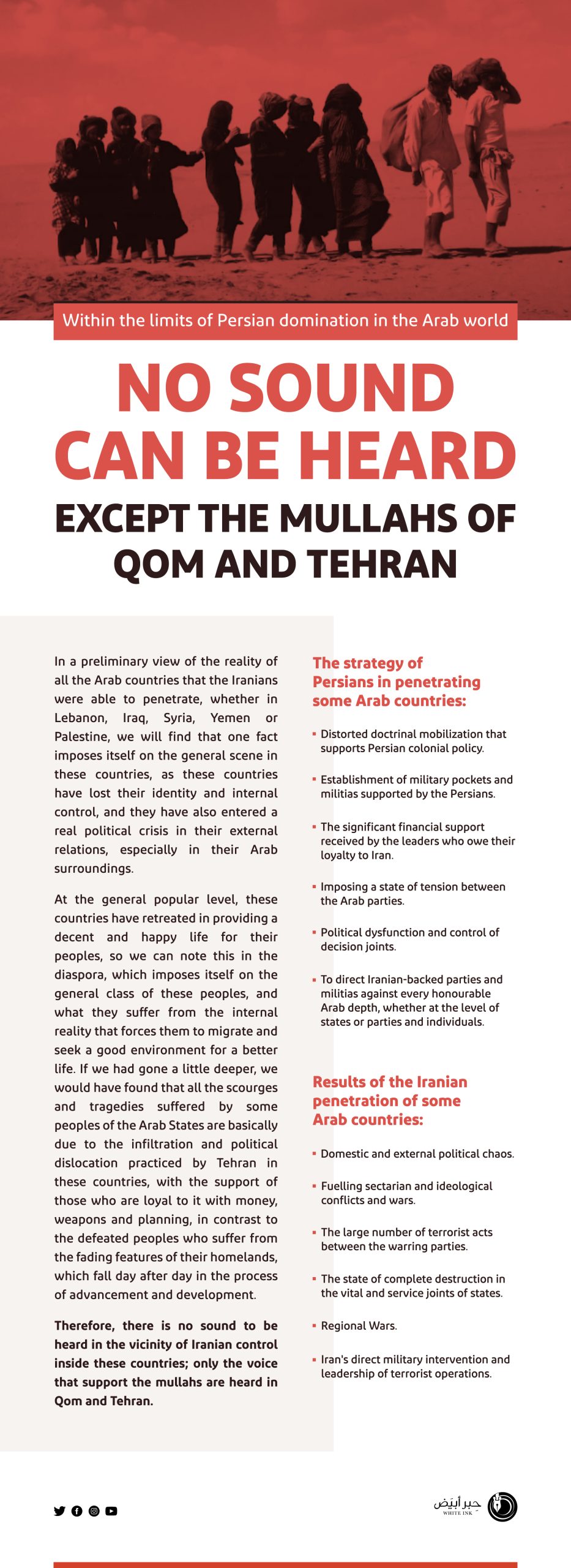
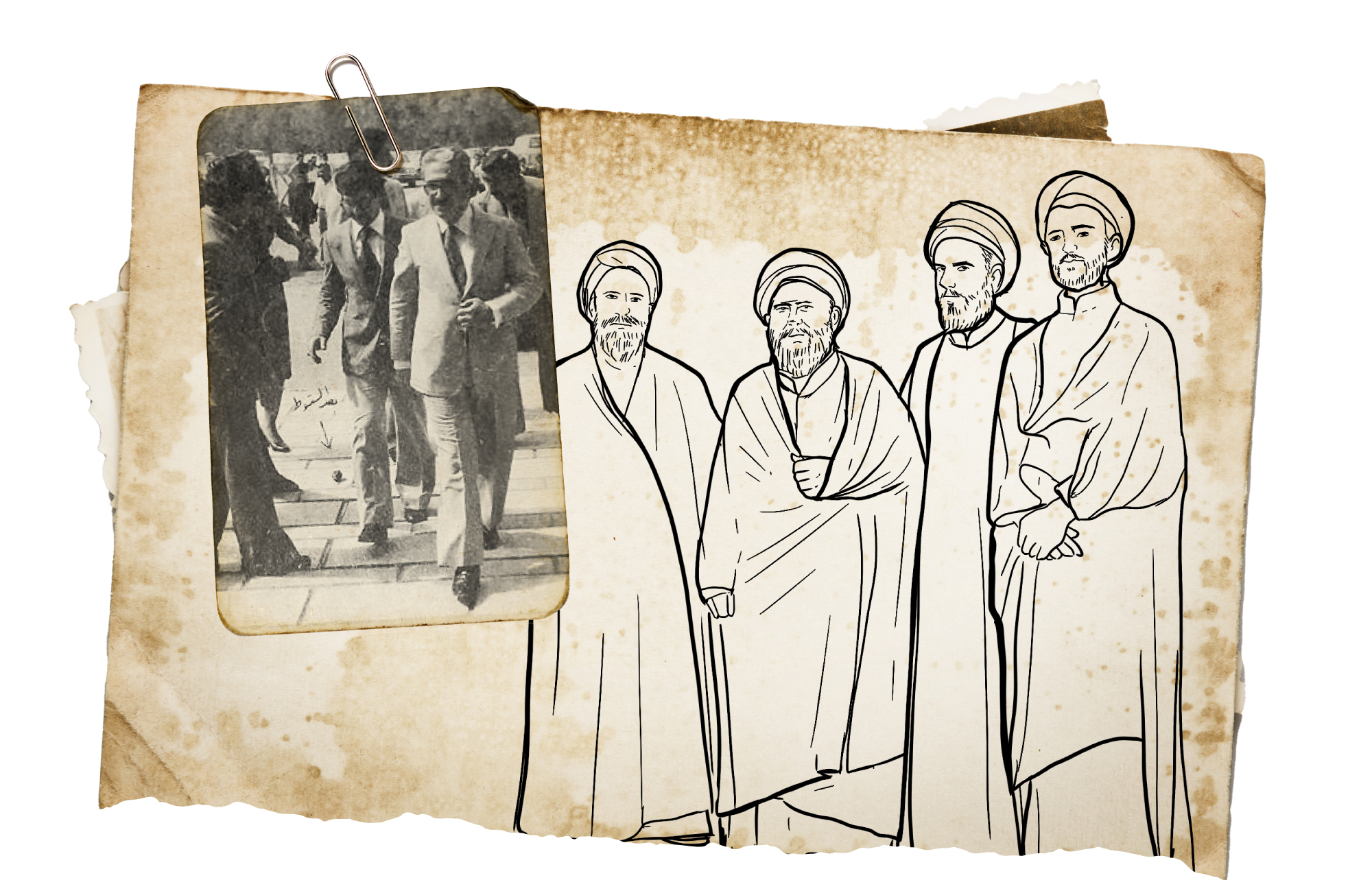
It was implemented by “Dawa Party” in favor of the Iranian intelligence
The First Terrorist Incident After the Khomeini's Revolution:“Al- Mustansiriya” (1980)
There is no doubt that the relationship between Arabs and Persians is an inevitable relationship. That is the reality impelled by geography. Thus, history has monitored many crises, wars and intellectual competition between the two nations. Although such inevitability faded during some stages for pragmatic reasons; or the conflict flame subsided a little, it soon flared up again. Perhaps history bears witness to this conflict since the expedition of “Sabur II” against the Arabian Peninsula. In addition, the violence and bloodshed that remained in the Arab memory are considered a monitoring and registration of everything that took place during that era. Until the present day, we see the manifestations of the Persian fascism against Arabs and the extent of the destruction and bloodshed that happened in some Arab countries due to the Iranian- Persian policy in Iraq, Syria, Lebanon, Gaza and Yemen.
Persians established a long- term strategy for treating Arabs. They based this on an ancient political legacy that is still vivid in their minds. This is confirmed by the historical events of the Persian- Arab conflict since ancient times, especially those that happened in the story of the Persian occupation of Yemen during the reign of Saif bin Dhi Yazan.
Today, Iran has restored the tracks of the historical conflict and employed them in favor of the Persian dream regarding the expansion to the east, especially in Iraq. The intervention in the affairs of its Arab neighbors constituted the first goal. That is what Sasanian kings have done in the ancient Persia. The eastern coast of the Arabian Peninsula was a permanent battlefield. Its inhabitants suffered from Persian interventions, as well as Iraq, until they reached Yemen after they allied with Saif bin Dhi Yazan.
Iranians use the “Persian trick”, which is reaching their goals by exploiting the others while standing behind the scenes moving the puppets over which they have influence. Their policy is summarized as follows:
First: The penetration and transformation of the indigenous inhabitants of the targeted peoples into tools in their hands directing them however they want. This is what they did with Saif bin Dhi Yazan nearly two thousand years ago and they succeeded in this regard for some time of the history. Today, they are doing the same with Al- Houthi in Yemen, Hassan Nasrallah in Lebanon and others. However, today they use a sectarian influence as a cover to achieve their political goals and break up the Arab powers.
Second: Creating consecutive conflicts and building permanent enclaves, which start small and over time, they turn into influential forces swallowing the nation and the homeland which is the center of competition. In Yemen, for example, they built a religious school in the Houthi areas – Saada in particular – in the mid of the eighties so as to be able to penetrate. Along similar lines, the same is repeated in Lebanon and Gaza with the same scenario and results.
Third: Intervening in the affairs of the Arab countries and working to weaken and topple them down from within, by forcing a state of tension between the Arab countries themselves; and exerting pressure on the state that they deem strong, as happened between them and Iraq. When Khomeini’s revolution took over the power, they imposed a rough form of the relationship with Iraq. Iran deemed Iraq as a part of its imperial legacy that was robbed from it by the first Arabs in Al- Qadisiyah battle. It endeavored to restore that part; in addition, it employed everything it could use from proxy wars, to agents and contractors; and it created fragile enclaves by imposing a sectarian war, adopting and financing terrorism with the aim of occupying Iraq. For that purpose, they fought bloody wars in the eighties of the last Gregorian century.
Through recalling the famous Al- Mustansiriya incident in (1980), when an Iranian student, who belonged to “Dawa” party, threw a bomb in the middle of Al- Mustansiriya University campus in Iraq. Dr. Fadel Badran said in his publication titled “In Order Not To Forget Al- Mustansiriya Crime”, documenting the crime: “It was the first time that a university has been attacked in broad daylight by weapons.. Especially that the students were celebrating the convention of a student conference on an economic issue.. The two martyrs were a male and female students.. Because of killing the criminal who threw the two bombs, no one knew the perpetrator or perpetrators.. But we thought it was Iran.. That was due to the tension of relationships between Iraq and Iran during that period”. On the following day- that was 3/4/1980- the terrorist act was announced. Furthermore, it was confirmed that the one who threw the bombs at the student gathering at Al- Mustansiriya University was a student who belonged to (Dawa Party) of Iranian origin. His name was Samir Nour Ali Ghalem. Dawa Party admitted this operation led by the Iranian intelligence and implemented by their agents who were members of Dawa Party.
During the eighties of the twentieth century, Iran's strategy focused on the attempt of destroying and occupying Iraq

The writer, Fouad Atef Al- Abadi, talked in his book “Iran’s Foreign Policy and its Impact on the Arab Gulf Security,” saying, “Iran has adopted a revolutionary foreign policy since 1979. It had a preconceived vision of the world, which was reflected in its policies. Such policies resulted in international isolation and a negative view of it”.
All this confirms that the current Iran seeks revenge against Arabs. Based on the above, Iran is working to call up a long history of the tense and bad relationship with anything outside the Persian nation, especially Arabs. It, rather, uses such comprehension in every dispute and conflict. It applies revolutionary thought and tries to seize the bounties, resources, countries and beliefs of the others by force and deception.


- Jamal Wakim, Eurasia Vs the West: The Struggle for Hegemony in the Middle East (Beirut: Dar Abaad, 2016).
- Hussein Mujib Al- Masry, Relationships between Arabs, Persians, and Turks (Cairo: Al- Thaqafia Publishing house, 2001).
- Fouad Al- Abadi, Iran’s Foreign Policy and its Impact on the Arab Gulf Security 1991- 2012, Master Thesis, Faculty of Arts and Sciences, Middle East University, Amman (2012).
- Muhammad Bayoumi Mahran, Studies in the History of the Ancient Arabs, 2nd (Alexandria: Dar Al- Marefa Al- Jami’iyya, n. d.).
- Ali Muhafaza, Iran between Persian Nationalism and the Islamic Revolution (Iran Ben Al- Cawmiya Al- Faresya Wal Thawra Al- Islamya) (Amman: The Arab Institute for Studies and Publishing, 2013).
- Homa Katouzian, The Persians: Ancient, Mediaeval and Modern Iran, translated by: Ahmad Hasan Al- Ma’ini (Beirut: Dar Al- Jadawel, 2014).
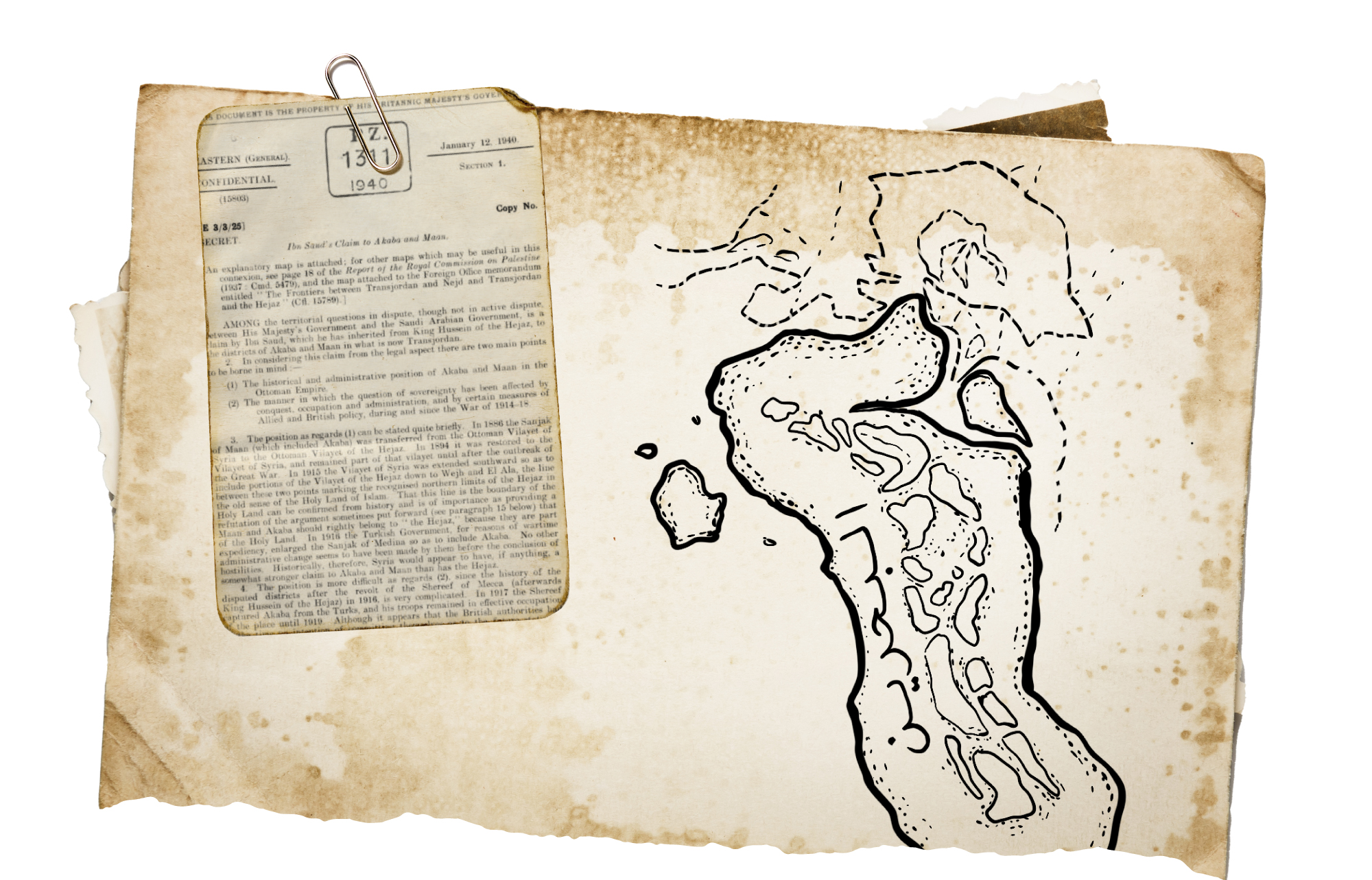
The Persian Project Collided with the Saudi Wall of Resistance
Forged Document of “Bruce” One of the Persian Devious Means to Penetrate Bahrain
Upon presenting the details of a relationship between two hostilities, we should understand history well. In addition, present Iran is only an extension of the ancient Persian history combined with its hostility against Arabs. Moreover, we should also be aware of an introduction to presenting the strategy of resistance and confrontation based on a careful reading with respect to, first: the strategic environment under study, second: the behavioral structure of Persians, and third: the political decision- making system in Iran.
If there are conclusions that can be derived from these “studies”, the most important of which is, perhaps, highlighting the belief of the ethnic superiority of Persians towards Arabs, then, desecrating their homes and allowing their killing for the purpose of serving the Persian agenda in the region. Their adaptation of the religious text, and the attempt of Al- Melali to direct it to serve the political expansion goal of Tehran remain evidenced in the strategy of Al- Melali.
In this context- centuries ago- Al- Melali gathered a religious belief that appeared to support Al Al- Bayt, may God be pleased with them all, while its true interior was the prelude of legitimizing the expansion belief of the rulers of Persia. Perhaps the gathering opinions on the necessity of the historical revenge based on the Persian ideology is, in fact, a misrepresentation and deception of the reality of the expansion ambitions that cannot be achieved without entering a real conflict with the center of mass of the Arab and Islamic world represented in the Kingdom of Saudi Arabia.
Al- Melali worked on the adaptation of religious texts in order to serve the Persian expansion project in the Arab world.

In connection with the central role of the Kingdom of Saudi Arabia regarding the resistance of the Persian expansion in the Arab countries, Saudis firmly stood in the face of the Iranian project and tore it apart in every direction by resisting it to protect the Arab depth although Al- Melali insisted on separating the Arab countries under the justifications of the claim of the “historical right”; or the justification of democracy and change by riding the wave of the so- called “Arab Spring”.
The most prominent of those Arab countries is Bahrain, which has been and is still being a constant ambition in Iranian foreign policy in view of its geographical location, given its presence in the middle of the Arabian Peninsula. Since the location of Bahrain is strategic in relation to the Arabian Peninsula, Persians wish they had transformed it into a base of progression and control. In addition, the population scale is deemed by Iran as an (abnormal) justification to impose its control over this Arab Gulf country and extend its influence in and through it.
Bahrain formed a fixed point in the Persian series of ambitions in the Arab region in general, and in the Arab Gulf in particular. Therefore, Iran tried to claim that it had historical rights in Bahrain on the grounds of a forged agreement between Persians and the British political agent Bruce, who took a bribe from Iranians to provide them with an official recognition document of the affiliation of Bahrain to them. Then, he paid the price for that as he was discharged and dismissed from the service of the British government that deemed that he did that act without permission. It “tackled the relationship of Iran with the Gulf region as a whole… Signed by W. Bruce, the British Political Resident in the Gulf on behalf of the British government in Shiraz on Aug. 30, 1822; and was also signed by Mirza Zaki Khan, the ministry of the Reigning Prince of Persia Province on behalf of Iran.
Persians adhered to the clauses of this forged agreement, which ruled to achieve the Persian colonial expansion goal in Bahrain, to make its rulers subordinate to the government of Iran. It also emphasized that the Sheikhs of Utub were rebellious against the power of this government. In addition, the British government shall not provide aid to Bahrain, on the contrary, it should help Iran to suppress Utub, it claimed, as it was awaited from Persians. The claim of Iran regarding its rights of sovereignty over Bahrain was personally recognized and ratified in complicity with Bruce.
The merits and contexts of signing this agreement made it with no legal value as it declined in form and substance, since Bruce did not have the authority to sign any treaty in the name of Britain; and because the agreement content was not agreed upon by the British government, which is called according to the protocol of the international agreements “La ratification”. Hence, it is confirmed by the author of Gazetteer of the Persian Gulf, Lorimer, that “the government of Bombay did not agree with the General Resident on these opinions. Therefore, it, immediately and upon receiving such news, informed the government of Iran, in decisive and clear terms, that it did not approve the act of its General Resident. In order to further declare its unacceptance of this agreement, it transferred Captain Bruce from his position and immediately recalled him to India”.
With regard to the legal background that affected this personal act of Bruce, Talal Al-Tarifi asserts in his book, Saudi- Bahraini Relations During The Reign Of King Abdul Aziz, that this agreement is considered null and void as it has no legal consideration, recalling that Britain “rejected this agreement and did not sign it because it is considered null due to the intervention of the personal factors of Bruce. This led to dismissing him from his position”.
The firmness of the Saudi attitude towards Bahrain constituted an official tendency regarding the foreign policy of Riyadh. This made the Iranian political decision maker believe that Saudi Arabia would aggressively and forcefully defend any prejudice to the sovereignty of Bahrain. This has been translated by history for more than a century, since the reign of the founder King Abdul Aziz, may God rest his soul.
In addition, the Saudi-British treaty of (1927) was considered a severe blow to the Iranian project through asserting the Sixth Article thereof regarding the explicit recognition of Bahrain’s sovereignty. Therefore, the attitude of the Kingdom of Saudi Arabia is actually and visibly substantiated by stopping the Iranian ambitions and attempts.


- Ahmed Fahmy, “The Foreign Policy of Iran Towards the Gulf States: Bahrain as a model (Al- Sayasa Al- Kharigya Liran Tigah Diwal Al- Khalig: Al- Bahrain Namozag), an article published on Islamic Path website on Feb. 9, 2019… Refer to the link https://ar.islamway.net
- G. Lorimer, Gazetteer of the Persian Gulf (Doha: Ali Bu Ali printing press, n.d.).
- Jamal Wakim, Eurasia Vs the West: The Struggle for Hegemony in the Middle East (Beirut: Dar Abaad, 2016).
- Talal Al-Tarifi, Saudi- Bahraini Relations During The Reign Of King Abdul Aziz, (Riyadh: King Abdulaziz Foundation for Research and Archives, 1430 AH).


